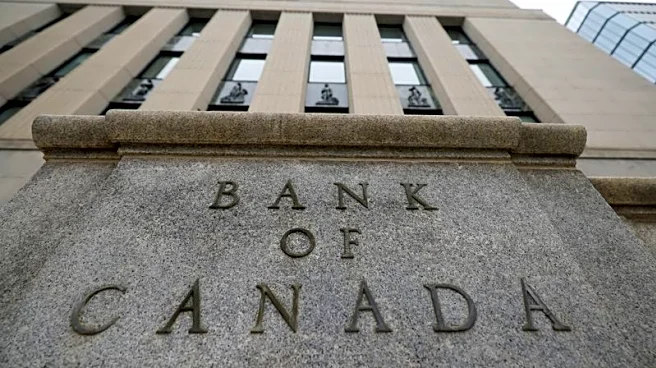What is the story about?
What's Happening?
The Canadian dollar rose against the U.S. dollar following stronger-than-expected domestic jobs data, reducing bets on another Bank of Canada interest rate cut this month. The loonie was trading 0.2% higher, rebounding from its weakest intraday level since April. Canada's economy added 60,400 jobs in September, reversing losses from the previous month, while the unemployment rate held steady at 7.1%. Economists had forecast a gain of 5,000 jobs. The data has led investors to see a roughly 50% chance of a rate cut at the next policy decision, down from 72% before the data.
Why It's Important?
The rebound in the Canadian dollar and the strong jobs data are significant as they influence monetary policy decisions by the Bank of Canada. The central bank had previously eased its benchmark rate to support the economy amid trade uncertainty. The jobs data suggests economic resilience, potentially impacting future interest rate decisions and investor confidence. The currency's performance also affects trade dynamics, particularly with the U.S., as oil prices, a major Canadian export, declined.
What's Next?
The Bank of Canada is set to make its next policy decision on October 29, with interest rate expectations influenced by the latest jobs data. The central bank's approach to supporting the economy amid trade uncertainty and fluctuating oil prices will be closely watched. The bond market is set to close early ahead of the Thanksgiving Day holiday, potentially affecting market dynamics.
Beyond the Headlines
The Canadian dollar's performance and interest rate expectations highlight the interconnectedness of economic indicators and monetary policy. The impact of oil prices on the currency and trade relations with the U.S. underscores the importance of energy exports in Canada's economic strategy.
AI Generated Content
Do you find this article useful?














